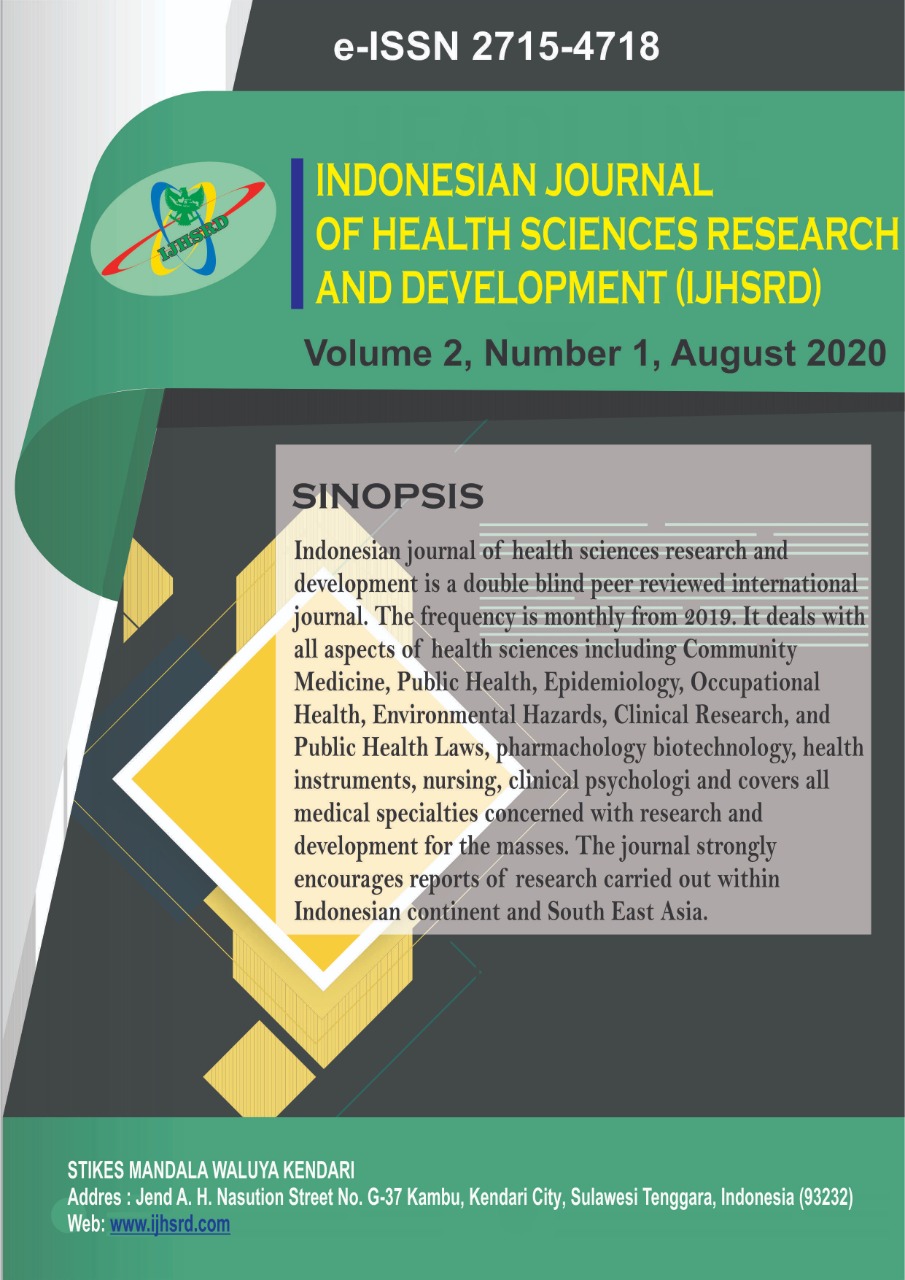Main Article Content
Abstract
Background: An effective health planning is a root of success to cope with public health problems in the village. Communities in the village have resources to solve the problem. However, they do not have the skill to cope with their problem. This qualitative study is to analyze the process of community-led health program planning.
Methods: This qualitative method using Participatory Rural Appraisal Approach which recruited village communities and government from April to August 2016 in Lambusa and Lebojaya Villages, Konda Sub-district in Southeast Sulawesi Province, Indonesia. Data analysis used interpretive analysis.
Results: This study found that there were several steps to empower village communities to develop village health planning. Firstly, socialization about the process and establishing a Village Facilitator Team. Then, The VFT was be trained to increase their knowledge and skill about the village health program planning. The final step is a community meeting to identify the causes of illness and death and developing the village health program for dealing with the causes.
Conclusion: community-led health planning process can be implemented in the village to increase the quality of the village health program, especially in the remote or village areas.
Keywords
Article Details

This work is licensed under a Creative Commons Attribution-ShareAlike 4.0 International License.
References
- Fretheim A, Munabi-Babigumira S, Oxman AD, Lavis JN, Lewin S. Support tools for evidence-informed policymaking in health 6: Using research evidence to address how an option will be implemented. Health Research Policy and Systems. 2009;7(1):1-11.
- Ministry of Health of Republic of Indonesia. Health Profile of Indonesia in 2015. Jakarta: Ministry of Health of Republic of Indonesia; 2016.
- Health Department of South Konawe District. Health Profile of South Konawe District in 2016,. In: District HDoSK, editor. Andoolo: Health Department of South Konawe Department; 2017.
- Oka IN, Aryawa IGB, de Rosario YB, Triana C, Hamid, S.A., Widimulyani S, et al. CLAPP community-led assessment and planning process: Menuju kepemimpinan rakyat. Mataram: Mitra Samiya, Australian Government - ACCESS; 2005.
- Templin TJ, Richards KAR. C. H. McCloy Lecture: Reflections on Socialization Into Physical Education: An Intergenerational Perspective. Research Quarterly for Exercise and Sport. 2014;85:431-45.
- Mao A, Mason W, Suri S, Watts DJ. An experimental study of team size and performance on a complex task. PLOS ONE. 2016;11(4):1-22.
- Mason W, Watts DJ. Collaborative learning in networks. Proceedings of the National Academy of Sciences. 2012;109(3):764-9.
- Littlepage G. Effects of group size and task characteristics on group performance: A test of Steiner's model. Personality and Social Psychology Bulletin. 1991;17(4):449-56.
- Tasnim T, Lusida MI. The model of supervision for impermanent food sellers by women volunteer in Kendari City Indonesia. Indian Journal of Public Health Research & Development. 2018;9(10):209-14.
- Campbell JR. Participatory rural appraisal as qualitative research: Distinguishing methodological issues from participatory claims. Human Organization. 2001;60(4):380-9.
